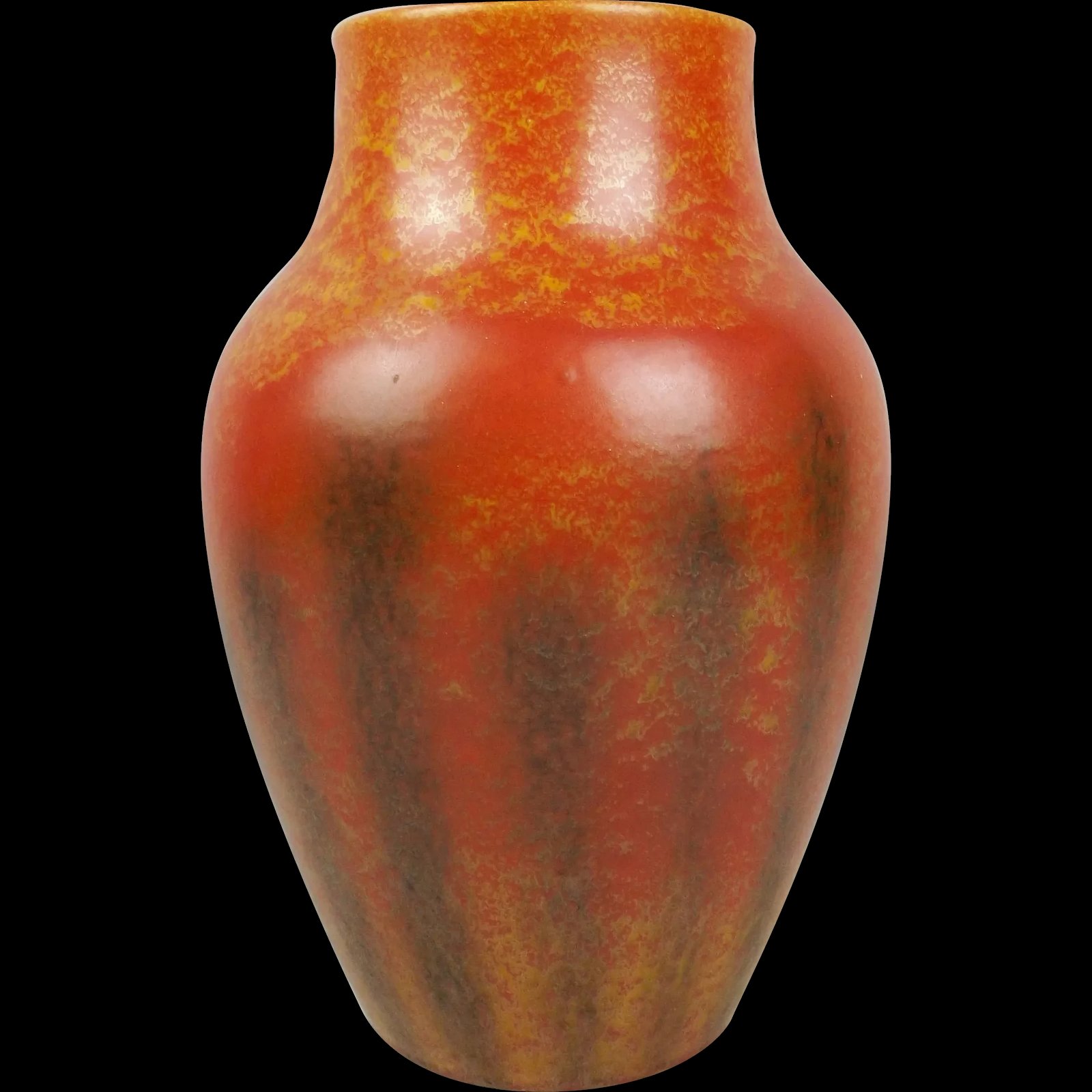~ Pilkingtons Royal Lancastrian Orange Vermillion Vase c1920’s ~
A gorgeous circa 1920’s vase from Pilkington’s Royal Lancastrian Pottery Company in an Orange Vermilion glaze.
The vase is of ovoid/baluster form with a deep orange glaze with golden speckling and dark ‘flares’ rising from its base.
This effect was created by allowing crystals of applied metal oxides to develop before firing which created the speckling, and adding combustible material during firing to produce the darker ‘flares’.
The base has the impressed makers marks for Pilkington’s Royal Lancastrian and reads ‘Made in England’ along with the number ‘2085’.
~ Dimensions ~
The vase has an approximate diameter of 16.5cm (6 ½ inches) and a height of 27cm (10 ½ inches).
It weighs 1.39 Kg.
~ Condition ~
The vase has a little nibbling round the edge of the base but nothing of significance. Otherwise the vase is free from damage, has little sign of wear and is in a lovely condition.
~ Pilkington’s Royal Lancastrian Pottery Company’ ~
Pilkington’s Lancastrian Pottery & Tiles was a manufacturer of tiles, vases and bowls, established in 1892, based in Clifton, Greater Manchester, England.
The company employed talented designers, the most famous of whom was Charles Voysey. Production of art pottery was stopped at the end of the 1930s, although tile production continued.
High lustre glaze finishes were produced from 1906, and are particularly associated with the designer Gordon Forsyth, who joined the company in the same year. The name ‘Lancastrian’ was used for the new ware due to the location in the county of Lancashire. Glazes of different textures were used. Some of the more famous glazes used by the Royal Lancastrian Pottery Company included sunstone, eggshell, crystalline and aventurine. One of the most notable, Lancastrian Lustre, was exhibited at the Franco-British Exhibition of 1908.
In 1913 King George V and Queen Mary visited Lord Derby, in whose home several Lancastrian vases were proudly displayed. It was then that permission was granted for the royal warrant to be used and the firm became ‘Pilkington’s Royal Lancastrian Pottery Company’.
#6896


